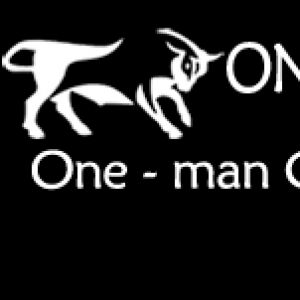Cattle Pen Designs for Smooth Cattle Handling, 12 tips.Posted by onemancorrals on November 23rd, 2019 1/. Let them decide. I’ve proven this many times, if cattle won’t go through a gate or into a chute, I just stop for a few seconds to allow them to ‘evaluate’ the space ahead. And usually they’ll just move into it spontaneously. Let them know where you want them to go, but then let them decide. A little patience can reduce much stress — on you and the cattle. It’s actually a good tip for living :) 2/ Enticing cattle works better than forcing them. Cattle pen design is one way to draw cattle into and through a corral. But there are another 7 ways to entice cattle to where you want them to go — from food to companionship, to the promise of escape, right up to the headgate. Enticing, rather than forcing cattle, reduces stress and therefore improves safety. And reduces labor. Where cattle flow easily through well designed pens, and well positioned gates, one person can easily handle — and sort — a hundred or more cattle alone. 3/ One-person sorting. Cattle pen designs vary in every country, and each has it’s own favored way of sorting cattle. But sorting cows from calves can be easily done by a gate between two pens. Once cows discover there’s no exit from the pen they’ve just entered their instinct is to head back towards the entry gate. You can use this natural movement to sort them. Also, calves usually lag their mammas, so once all the cows are through a gate, close it and put the lagging calves into an adjacent pen. Cows will naturally go back looking for their calves, so use this movement also to separate the rest of them as they pass back through the gate. An extended overhead handle on this gate — allowing cattle pass under it — allows you to operate it from a distance so you don’t balk them. 4/ Shadows, color, and noise. Cattle feel threatened by anything different or unknown. Shadows & odd color patterns will cause them to hesitate. Cattle pen designs, and chutes, should take into account the sun angles & light sources. Decrease shadows by putting solid sides on chutes & crowding pens. Artificial light directly overhead will eliminate some shadows. Cattle will hesitate at sharp or unnatural noises, eg. a clanging a head gate. Rubber pads cut from an old tyre can be siliconed on the headgate (or even just the silicon) to dampen any harsh clanging. 5/ Escape, sun and slope. Cattle are drawn forward when they can see a possible escape route ahead. This is why curved pens and chutes work so well. Also they move more readily away from the sun, and uphill rather than downhill. Keep this in mind when deciding your chute entry. This all facilitates easier cattle flow, and therefore stress less cattle handling. 6/ Correct chute width reduces injury. I’ve seen it many times, cattle attempting to turn around in a chute because it’s too wide — and getting stuck, and sometimes injured. Correct chute width depends on the size (age and breed) of cattle but generally should be 28–30” for adults and about 18” for calves. However a double width calf chute — where calves can turn freely — holds twice as many calves and is therefore much faster than a single width chute. Calves also flow into and out of it easier. 7/ Avoid getting into crowded pens. It doesn’t make much sense to get into a crowded pen with boisterous animals ten times your weight! I’ve probably suffered more in crowding pens than anywhere else (mostly my toes!). But there’s absolutely no need to get into a well designed pen. With a center working platform you’re completely safe as cattle flow naturally around you into the chute. 8/ Gate design for safe cattle handling. All gates should latch automatically so you never need to take one hand off the gate to latch it. If an animal backs into or kicks a gate when you’re trying to latch it, it can result in a serious dental bill. There are various simple automatic latch designs you can make yourself. Chute gates should be quick and easy to operate, without hindering movement on the catwalk. Sliding gates work well, but ‘gliding gates’ even better (gates that move like a sliding gate but smoother, and no runners to get in your way). I have various designs of both. 9/ Use visual barriers to improve cattle flow. Completely solid fences are much more expensive than open-rail fences. Cattle pen design should include visual barriers at strategic points on the fence or gate, a practical compromise that can save you thousands of dollars — while cattle still flow well. 10/ No dogs around the corral. Dogs are of coarse handy for moving cattle quickly, but around a corral they tend to put cattle on edge, and this results in stress, injury and even corral damage. I always suggest to move dogs well out of cattle earshot when working in a corral. 11/ Staying in sight. If you’re directly behind cattle they can’t see you without turning their head — which distracts them from where you want them to go. Standing about 35° to one side allows them to see you as they move forward. 12/ Cattle like routine. The fact that dairy cows often start moving towards the milking parlour at milking time shows how comfortable cattle can become with routine. If possible use the same entry gate, and route through a corral so that cattle become familiar with it. Looking for Cattle pen designs should ensure that cattle’s corral experience is a pleasant one so cattle flow into and through a corral better each time. Like it? Share it!More by this author |



